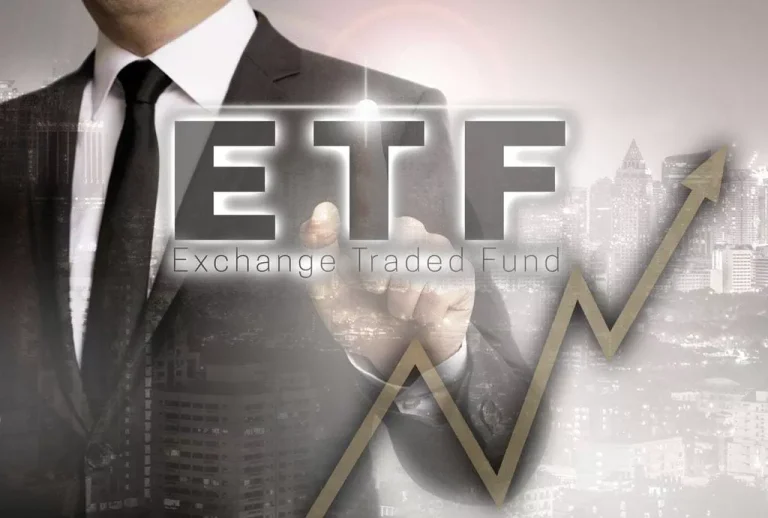Content
Without the correct address, you can’t access your smart contract or its functions. Though smart contracts are secured by their underlying blockchain technology, they also Proof of personhood need to be secure by design. As noted above, certain functions or errors in their code can be exploited. The term “smart contract” was coined in the 1990s by visionary computer scientist Nick Szabo.
Best Practices for Using Smart Contracts

The blockchain, where this transaction has taken place, is then updated when the transaction https://www.xcritical.com/ is completed. As per the blockchain and its cryptographic technology, this means the transaction cannot be changed and only those with permission can see the results. As you might expect, a smart contract can contain as many “if…then” conditions as needed to satisfy the security obligations of a particular transaction. Any developer can create a smart contract and deploy it on a public blockchain for their own purposes, e.g., a personal yield aggregator that automatically shifts their funds to the highest-earning application. However, many smart contracts involve multiple independent parties that may or may not know one another and don’t necessarily trust one another. The smart contract defines exactly how users can interact with it, involving who can interact with the smart contract, at what times, and what inputs result in what outputs.
Royalty payment in media and entertainment

Just like you need to pay an attorney or third party to write a paper contract, you have to pay to execute a smart contract on a blockchain. Fees (called “gas” in Ethereum) can add up, especially if the value of the token soars during the operation. Smart contracts are immutable, so a small slip in the code can result in enormous and negative consequences. “I would strongly smart contract examples encourage new developers to stay on testnets until they feel very comfortable with the smart contracts they are creating,” said Wykoff of Wursta.
What Are Smart Contracts and How Do They Work?
Individuals have the same data at all times, which reduces the likelihood of contract clause exploitation. This enhances trust and safety because contract-related information is accessible throughout the duration of the contract. Additionally, transactions are replicated so that all involved parties have a copy. The legal status and enforceability of smart contracts vary across jurisdictions, hindering their widespread adoption. For instance, a travel insurance policy could be written as a smart contract that automatically pays out when a certain flight is canceled.
They serve as the backbone for decentralized lending and borrowing platforms, enabling peer-to-peer lending without the need for intermediaries. Blockchain’s decentralized nature brings about another key advantage—enhanced trust and transparency. They are programmed to run automatically once certain conditions are met, eliminating the need for human intervention. Please note that the availability of the products and services on the Crypto.com App is subject to jurisdictional limitations. Crypto.com may not offer certain products, features and/or services on the Crypto.com App in certain jurisdictions due to potential or actual regulatory restrictions. The purpose of this website is solely to display information regarding the products and services available on the Crypto.com App.
It also means that John does not have to trust that AXA will pay him the agreed amount if his flight is late — he knows that if it is late, the smart contract will instantly send him his compensation ($100). Insurance companies could surely benefit from the use of smart contracts. It would eliminate the need of unnecessary communication between the insurance company and the user. Two insurance companies, Atlas Insurance in Malta and Axa in France, tested smart contracts in 2017. They had prototypes that compensated airline customers if their flights were delayed.
Vitalik Buterin, and the Ethereum community, believe that this is the future of the blockchain. If Bitcoin is the gold of the business world, smart contracts are the oil the business world runs on. On the other hand, centralised blockchains are controlled by a single entity. This allows the entity to manage the transactions on the chain, approving, cancelling or reversing at will. Centralised blockchains are often used in private settings where a single entity requires complete control over the system. Smart contracts deployed on a centralised chain can be altered, or the entity in control can reverse its actions.
The key difference is that it automates the whole crowd-sale process in a secure way. The blockchain is a shared database run by many computers (called ‘nodes’) belonging to many different people. Of course, it’s 2023 — even those who are not familiar with blockchain are likely to have heard of Ethereum. Ethereum is the second-largest cryptocurrency with a huge market cap of over $225 billion. The General Data Protection Regulation (GDPR) guarantees the right to be forgotten by its citizens. Nevertheless, if a digital legal contract binds an individual, it cannot be erased or redacted.
Smart contracts are the building blocks of Web3, which is rebuilding the internet with Web3 apps known as decentralized applications, or ‘dApps’. The most popular dApps use smart contracts to power decentralized finance (DeFi). To help minimize the risk of this, a number of third-party development and security firms like as Mythx and ConsenSys Diligence now offer smart contract auditing services.
The financial services sector is currently at the forefront of smart contract adaption. This industry is using smart contracts to replace manual processes that are both slow and expensive. This means that once launched, they cannot be changed or upgraded, which can lead to disastrous consequences if there are underlying issues with the code.
- Without the use of a smart contract in this scenario, Mike and John would have to pay lots of fees to third-party companies.
- A smart contract on its own can only be used for one type of transaction.
- This means they have a balance and can be the target of transactions.
- In the same way that you need gasoline or diesel for your car, you need Ether to run the smart contracts and applications on the Ethereum blockchain.
- You may design and issue your own digital currency, creating a tradable computerized token.
- By explicitly mentioning the compiler versions, you guarantee your contracts operate consistently across environments, avoiding release and authentication challenges.
Gaming NFTs have risen in popularity as a way to buy in-game purchases, sell them to other players, or even move them to other supported games, said Wykoff. “The unique ability for NFTs to retain value beyond a single game gives the limitless potential for new experiences within gaming,” he said. Before joining tastycrypto, Michael worked in the active trader divisions of thinkorswim, TD Ameritrade, and Charles Schwab.
Smart contracts allow creators to define licensing terms, automate royalty payments, and ensure fair distribution of digital assets. Smart contracts can track and verify the movement of goods throughout the supply chain, ensuring transparency, traceability, and reducing fraud. They can automate supply chain management processes such as order fulfillment, payment settlement, and quality control. Smart contracts can simplify insurance processes by automating claims processing, verifying eligibility, and facilitating payouts based on predefined conditions. This can reduce paperwork, improve efficiency, and enhance transparency in the insurance industry.
By incorporating Szabo’s smart contracts into the Ethereum Virtual Machine (EVM), he created a blockchain network capable of storing both transactions and code (smart contracts) in its blocks. Smart contracts are programs that execute on a blockchain network when predetermined conditions are met. When transactions are stored on distributed ledgers, they become traceable, transparent, and immutable, which is another way of saying that they are impossible to alter. Once a smart contract is created, it’s deployed to the blockchain, where it gets its unique address. However, there’s a significant differentiation between centralised and decentralised blockchains that can affect the smart contracts deployed on the chain. While smart contracts offer a way to automate and simplify many transactional processes, they aren’t set to replace lawyers entirely.
